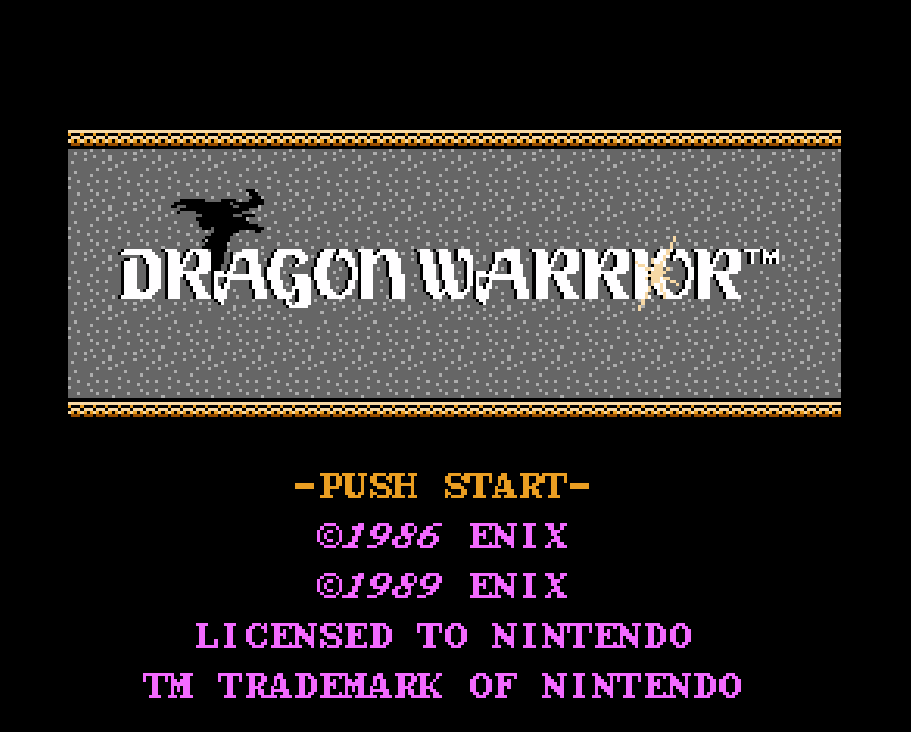Dragon Quest (localized as Dragon Warrior in the US) is the first game in Chunsoft and Enix’s (later Square Enix’s) fantasy JRPG series of the same name. In it you play as the descendant of the hero Erdrick, you’ve been summoned to castle Tantegel in the wake of the kidnapping of its princess. You’re tasked with defeating the Dragonlord, a monstrous magician who has summoned an army of monsters to wreak havoc across the land, destroying towns and kidnapping the realm’s princess, Gwaelin. After talking to the guards and the citizens of the nearby town of Rimuldar you find a cave that houses a tablet left by your ancestor Erdrick, which tells you to seek out the equipment he wielded on his own quest in times past.
Dragon Quest is the first console RPG to achieve major success without compromising the core features of the genre. At the time, several games had attempted to replicate the mechanics and features of PC RPGs to console, but they had been unsuccessful in replicating key features, such as selection from lists of abilities and actions. Tackling this problem required a groundbreaking new technique to be developed, one that had rarely been seen before and had never been used quite like this: the menu.
Though the concept might seem unassuming today, the windowed command menus in Dragon Quest were a fairly recent development at the time. Created by the same developers three years prior, these windowed menus were designed to remove the element of typing from text adventures by allowing the player to see and choose from a list of commands they could follow.

In RPGs on the PC, players typically had a wide variety of actions they could take: opening doors, searching their surroundings, using one of many spells, and more. Each of these options needed to be bound to an individual key of the computer, making it impossible to use them with the eight total buttons on the NES controller, four of which were necessarily reserved for movement.
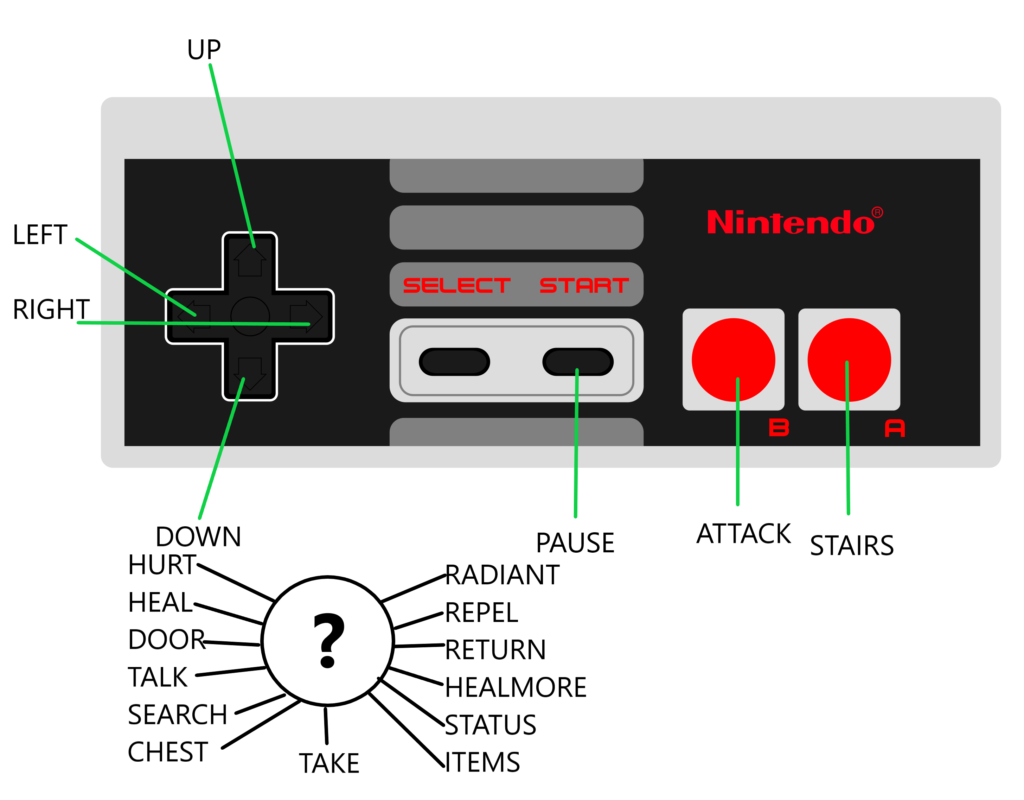
This was where menus came in, giving the player a list of options to choose from to act. These menus could even change between different scenarios (such as the different menus for combat and overworld interaction), or have additional menus embedded in them (such as the spell lists). Many of the core features associated with RPGs and JRPGs would never have been able to make the leap to console without Dragon Quest’s menus.
For instance, dialogue had previously been handled mainly in moments that fully took away player control or by walking into rooms. With the menu interactions, it could now be achieved by walking up to and talking to different NPCs. This allowed the developers to integrate one of the key components of RPGs, the search for information spread among different NPCs. With older methods of handling dialogue, you would need to travel to separate locations for each NPC you interact with or get a long exposition dump from a single NPC, but Dragon Quest was able to give you large amounts of information in a single area by giving each NPC a unique piece of dialogue.
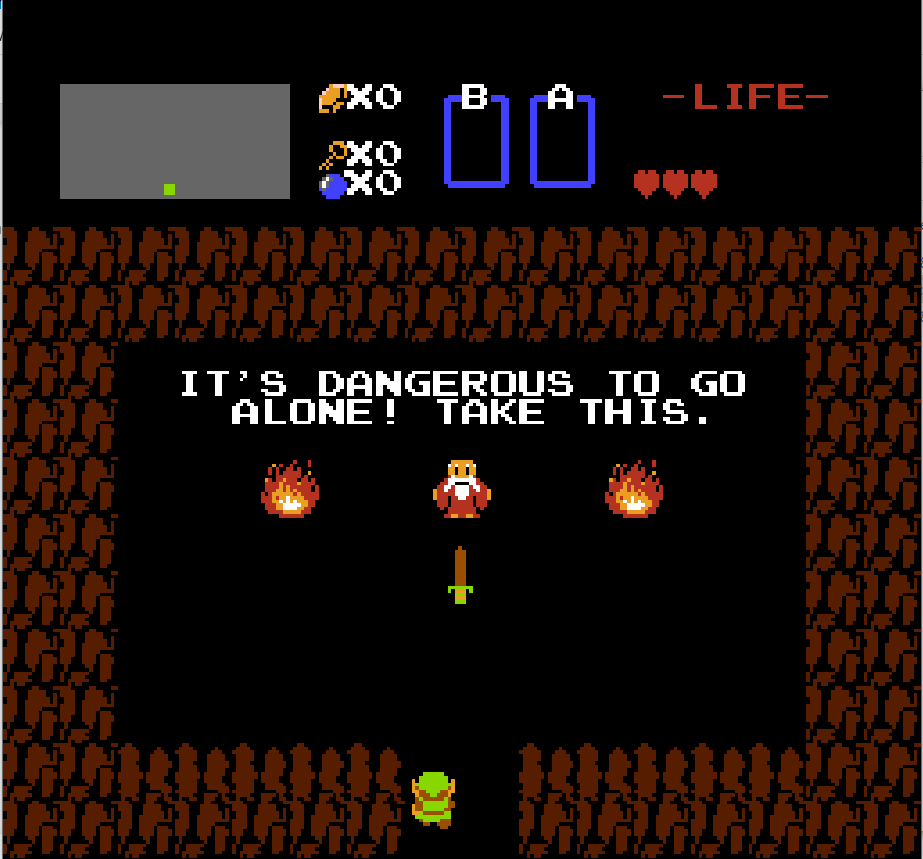
Dialogue on entry in The Legend of Zelda 
Dialogue via command in Dragon Quest
This set up for talking also allowed additional challenges to be set up to reach certain NPCs, or for them to be hidden in obscure corners of the map. This could give the player a way to visually know that there was something important hidden away, but still be unable to reach it, something which had been more difficult before.
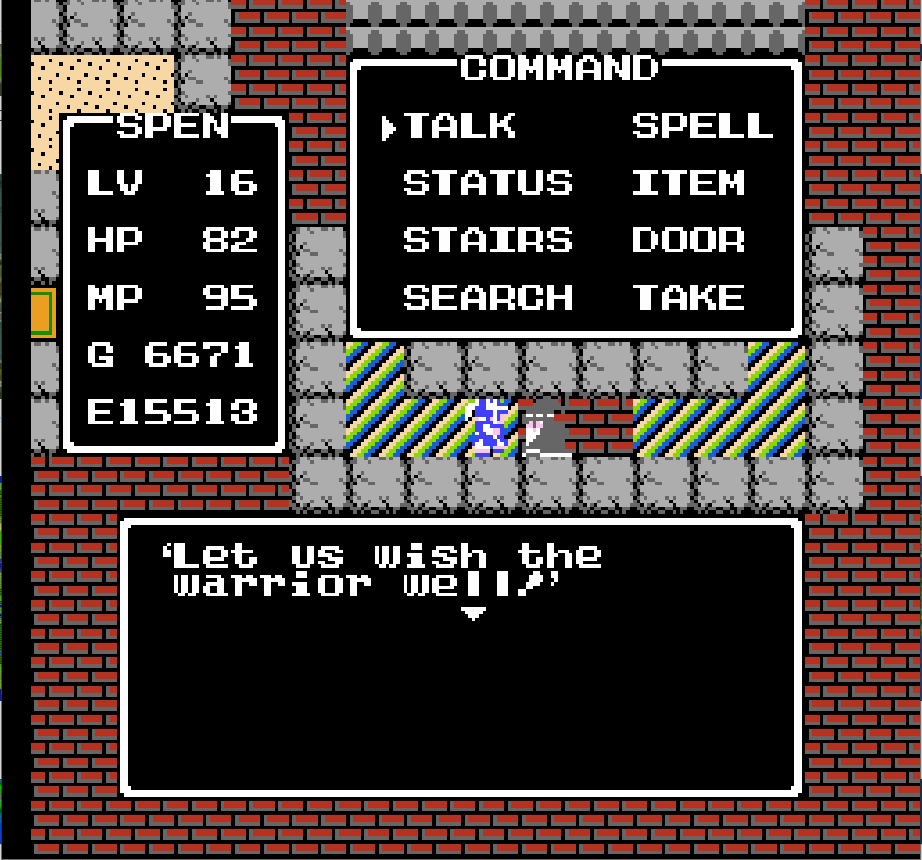
Another example is the wide range of spells and abilities the player has access to with some being useful in combat and some outside. This type of variety in abilities would traditionally come in the form of replaceable power ups or equipped weapons in other games, but by placing them in a single menu that can be accessed whenever you need to cast spells, it creates a more permanent sense of progression. The player never needs to feel limited by only being able to access a couple of their abilities at a time, or by needing to drop one to use another.
This menu was essentially what allowed Dragon Quest to function on console, it would have been impossible without it. And it wasn’t only Dragon Quest, but the system was quickly adopted by numerous other games. These weren’t just limited to other RPGs, but also quickly included games like the adventure game Zelda II: The Adventure of Link. Though many of the features of the menu have been lost over time, as they could be removed or condensed to other forms, both the menu and the gameplay it facilitated are still relevant and used in all kinds of games today.
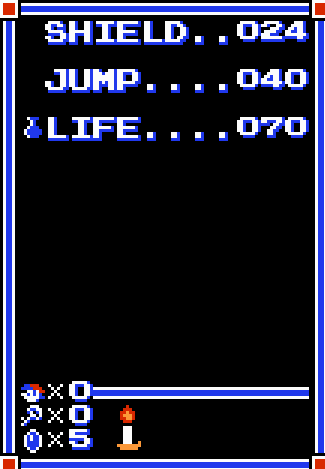
The magic menu in Zelda II: The Adventure of Link
Image credit to extralifereviews.com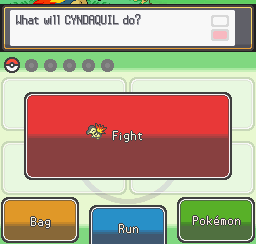
The fight menu in Pokémon Heart Gold and Soul Silver
Image credit to Carly Karas from medium.com
The item menu in Elder Scrolls V: Skyrim
Image credit to fontsinuse.com
It’s not an exaggeration to say that Dragon Quest’s menu was one of the most important features to ever appear in video games, as it both allowed for the release of an entire genre of games to the mass markets of the consoles, and popularized what would go on to become one of the most fundamental pieces of game architecture.
